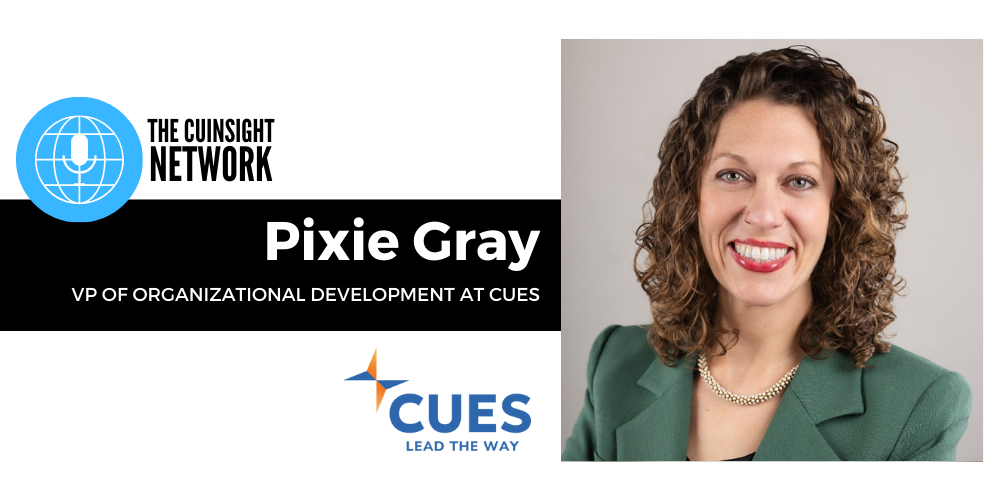Since I started my company 18 years and 87 credit unions ago, one of the biggest challenges I’ve observed in the credit union industry is hiring. The next biggest challenge is firing.
And I’m including my own experiences in these observations.
Hiring a good employee is critical in any organization. Whether it’s a small credit union or a large one, the wrong person in the job can make or break the reputation, the morale, the efficiency and the brand of the organization.
Over the years, I’ve developed a few best practices, so here are four ideas to help with your hiring procedures.
1. Interview three times.
Years ago, I was a recruiter. When we interviewed candidates, we would always talk to them three times – a practice I use today. The first interview is by phone. This gives a good overview of the candidate, and you can quickly eliminate someone for various reasons. A phone interview is also more efficient, because you can end it once you determine the candidate is not a good fit. I recently had a client schedule four interviews in one day for a Teller position. Three of them were no-shows. I asked her if she phone interviewed first, and she said no. I always start the interview process with a phone interview. I’m amazed at the people who apply for a job but don’t read the entire job description. I’ve phone interviewed people who didn’t know the job was in Hudson, Ohio (like the job posting indicated), they didn’t know it was for a small company (like the job posting indicated), they weren’t aware of the skill requirements (like the job posting indicated), or they didn’t know the salary range (like the job posting indicated). If they pass the phone interview, bring them in for an in-person interview. Twice. For both interviews, make sure that they are dressed appropriately, prepared and punctual. Ask them some of the same questions from the first interview to see if you get the same answers. You’d be surprised how polished a candidate is on the first in-person interview, but how drastically things change on the second. Do you add more time to the interview process by having a phone interview and two in-person interviews? Yep. Does it prolong the process? Yep. Is it worth it? Yep. Hire slow.
2. Cyberstalk them.
Social media is a great research tool. Google them. Check them out on Facebook, Twitter, LinkedIn, Instagram, and of course, mugshots.com. You can learn a lot about a candidate on the ole’ worldwide web. And you can find out if their social media presence is one that you would want to represent your organization. I’ve reviewed candidates’ resumes and searched them on Facebook and Twitter. Some candidates eliminated themselves based on their social media content. Have I discovered surprising things? Yep. Did it take more time? Yep. Did it help me make a better hiring decision? Yep. Hire slow.
3. Test their skills.
This one has saved me a lot of potential headaches once I started doing it. During the interview process, candidates have assured me that they had the skills to do the job. However, I’ve hired Account Managers that couldn’t manage accounts. I’ve hired copywriters that couldn’t write copy. I’ve hired graphic designers that couldn’t design. But once I implemented skills testing, I eliminated candidates before an offer was made. A good friend of mine owns a company, and he shared his testing practice with me several years ago. He has a national sales team and they work with Excel spreadsheets for hundreds of companies. He told me once that his sales candidates always claim to know Excel. So, he created a “hands-on test” with various commands and tasks in an Excel document to see if the candidate really knew how to navigate around a spreadsheet. For his sales positions, he has the candidate Skype or conference call to give a mock presentation. I’ve borrowed that practice and I now have copywriters write articles as part of the job interview, while graphic design candidates must design a document with various instructions to produce a print-ready or digital piece. Does it take more time to do this? Yep. Is it worth it? Yep. Skills testing confirms if the candidate actually has the skills they claim. Hire slow.
4. Run a background check.
This one seems obvious. Unfortunately, it doesn’t always happen. I have a client that had a CEO for over 20 years, so a CEO search was a new process for the Board of Directors. They found a candidate who looked good on paper, had worked at various credit unions, and appeared to be an ideal match. They interviewed this person and made an offer. Several months into the position, the Board learned that their new CEO was knee-deep in a personal bankruptcy. Had they known that prior to hiring, they probably would have chosen another candidate. Does it add more time to the search? Yep. Will it be worth it? Yep. Hire slow.
Obviously, terminating an employee can often be a challenging situation. But sometimes, it must be done. I’ve seen credit union managers procrastinate or simply avoid the termination process all together. I’m not saying that termination should be the result of a single error or mistake. But a poor performer should be given honest feedback, coaching opportunities and time to improve. However, sometimes, the reality is that the employee will not succeed no matter how much coaching is involved. But termination is like a band-aid…it’s best to remove it quickly.
Here are some real-life situations that I’ve seen. In these cases, a quick termination would have been a better solution than what occurred. Instead of terminating the non-performing employee, look at what some managers have done.
1. Re-assign the non-performer.
Of course, it’s uncomfortable to fire someone. Yes, it’s difficult. Yes, it’s a hard conversation to have. And yes, you want to avoid it. But you need to do it! More than once, a credit union had an employee who wasn’t doing a satisfactory job in their position. No question about it. Instead of terminating the employee, in one instance, the manager simply created an entirely NEW position for that person. In another instance, the poor performer (and the office pot-stirrer) was reassigned to a different department and a different manager. Still employed and wreaking havoc, but not terminated. When you have a person that is hired to do a job, they should DO the job they were hired to do. If their skills don’t meet the job requirements, creating a new position so you don’t have to fire the person isn’t the answer. Neither is shifting them somewhere else, so they become someone else’s problem. This creates a dangerous culture where employees think you can never get fired, no matter how incompetent you are. They would be right. Fire fast.
2. Allow an employee to hold you hostage.
“We can’t fire that teller, because we’ll be too short-handed. It’s summer and we have vacations.” Or, “No one else knows how to do that…we can’t let him go.” As harsh as it sounds to get rid of a non-performer (or the proverbial bad apple/trouble-maker) you’ll be better off in the long run if you cut your losses quickly. I’ve terminated my own employees knowing that it would make my life much more difficult. But I couldn’t keep the non-performer because I knew the damage it would cause in the long run to my company, my reputation as well as my frustration level. When I’ve talked to clients about a terminated employee, one of the most common responses is, “We should have done it sooner.” Fire fast.
3. Don’t hold them accountable and do nothing.
This clearly sends a message to your staff. I’ve seen it up close and personal. An employee isn’t doing the job. Policies and procedures are blatantly ignored. A teller is continually out of balance. A loan clerk doesn’t complete loan paperwork. But nothing happens. Not only is this putting the credit union in jeopardy, it creates a morale issue. Part of being a leader is to recognize the good performers as well as the bad. When you identify a bad performer, explore coaching opportunities and PIPs (Performance Improvement Plans) to help the person. If those tools don’t work to improve the situation, consider termination. Fire fast.
Hiring and firing is not easy for many different reasons. But consider the resources that are wasted on hiring the wrong candidate. And consider the resources that are wasted on taking too long to fire an incompetent employee. Credit unions spend an excessive amount of time on risk management, asset liability management, growth strategies, product development, reducing delinquencies and charge-offs and maintaining various ratios. All that time is invested on the financial resources, but sometimes we just slam dunk a candidate into a job. Or we drag our feet with the non-performer because we don’t want to terminate someone.
But consider the fact that your employees are one of your biggest assets that can drastically impact your bottom line one way or the other, directly or indirectly.
So why wouldn’t you hire slow and fire fast?
For more information about Jayni or how her company might help your credit union, visit their website at www.marketingsolutionsunltd.com or email her directly at Jayni@marketingsolutionsunltd.com.







